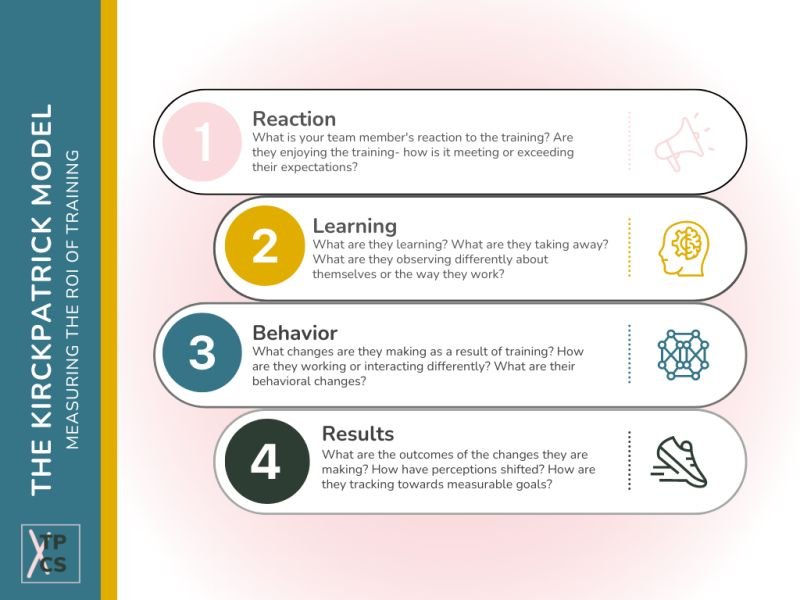Strategic Training Practices to Develop Team Members
This Monthly Best Praxis has tips for leaders to create strategic training practices to develop team members.
With evolving business goals managers and leaders need to develop strategies for skill development to manage for high performance. One of the most common forms of skill development is training.
Training is not just something done by L&D departments. As managers and leaders we are responsible for setting goals, determining the skills needed to achieve those goals, and developing strategies to close the gap. Sometimes those strategies are aided by L&D. Other times those strategies are developed internally.
To develop training strategies start by learning more about the discipline.
Training is any instructive development process where as the trainer you:
Set the desired learning outcomes
Develop a curriculum or process
Measure success
Set the Desired Learning Outcomes
Consider:
What skills do your team members need to be successful?
What capabilities are required to achieve your goals?
What norms and behaviors support team success?
What processes or operating procedures need to be followed?
What technical knowledge is needed?
Who is the perfect team member to do the work? What skills make them perfect for the job?
To achieve goals first you need to identify the necessary skills. It is important to consider technical capabilities as well as behavioral competencies.
Additionally, look to Bloom's Taxonomy and consider the level of learning needed. Do they need to be able to comprehend, apply, analyze, evaluate, or create?
Once you have a list of skills needed, complete a skills gap analysis. For this, if your ideal goal is 10, consider where your team members are individually and collectively out of 10. While individually they may be skilled you may also need to consider how well they operate as a team.
Develop a Curriculum or Training Process
With the skills gap complete, you should know:
The skills and competencies needed
Where each team member and your team as a whole are from 1-10, 10 being your ideal state
The level of learning needed
With this, you can build an incremental training plan. If your team members are a 2 out of 10 then your training plan should account for each small step- from 2 to 3 and 3 to 4 and so on. Your training process or curriculum could have different strategies for each step and needs to account for measured progress. The process should be iterative and you can adjust each stage with what you learn from the stage before.
To develop stages consider:
How does your team learn best?
What does the level of learning require?
Consider the complexity of the instructions or learnings. Consider how your audience learns best. Be creative with your training medium.
Potential training mediums include:
Instructions
Guides
Visuals
Videos
Presentations
Conversations
Shadowing
Pairing
Observing
The process can be quite simple and does not need to involve classroom training.
As an example, let’s say you work cross-functionally to develop a new process to create company-wide efficiencies. You then need to train your various teams in this process. You partner with departmental managers to write up the process and instructions as applicable for each team. You distribute those instructions via an email accompanied by a video presentation. You then host a Q&A to discuss the training and questions for application. Based on those questions managers share updated processes and guides. You work with managers to determine different shadowing, pairing, or observation processes depending on each team’s skill level. You monitor progress and adherence to the process in partnership with your managers. In monitoring, you get feedback on the success of the process in creating more efficient systems and have deeper conversations to understand if it’s a problem/ success in the process or a lingering skills gap and go from there. When done strategically this is training.
You set a learning outcome in support of an efficiency goal, developed processes to train a new process, and measured success.
Measuring Success
The success of incremental training needs to be constantly discussed and measured to apply learning and continuously improve. Start by communicating any new expectations and deliver ongoing feedback to provide information on progress.
Positive feedback should be given as often and intentionally as constructive feedback.
State the situation, the specific behavior you want to reinforce, the impact of the behavior, and your ask.
Example: "In our recent project meeting, your communication was very clear and concise, I can tell you are applying your learnings from the project manager training, keep it up!"
To measure the ROI of a training program consider where you have existing feedback loops, data, and information to review to gather data on the steps below.
Apply learnings from results to continuously iterate and improve on the efficacy of your training to develop your team members, manage for high performance, and lead more strategically.
Resources to Train for Development
Learn about the basics of training to develop strategic training programs.
Training steps or curriculum should be incremental training plans.
Learn how to create incremental training programs by exploring different training mediums.
Coaching and training are both effective and useful tools for development. Learn about the differences to be strategic in your approach.
About Talent Praxis
Praxis is bridging the gap between theory and action.
We help companies and leaders practice proven academic management theories in the workplace to build results-driven teams.
Management and leadership are not skills you learn once but rather ongoing practices to achieve results.
Talent Praxis offers one-on-one leadership coaching, training in people management, and consulting in performance management to help leaders and companies develop their own strategic praxis.
Ready to learn more?




